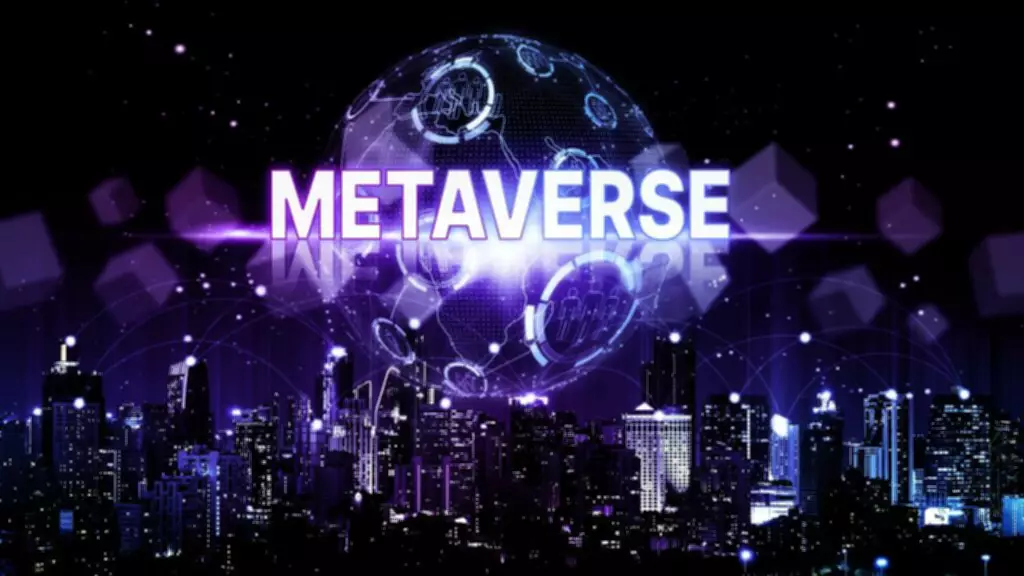Our goal at Benchmark Commercial Lending is to provide access to commercial loans and leasing products for small businesses.
Content
Decentralized crypto exchanges are built on top of blockchain networks, such as Ethereum, that integrate smart contract functionality. On the one hand, we have seen the inefficiencies of the oldest banking system that doesn’t offer equal opportunities for receiving quality financial services to startups, SMEs, and individuals. On the other hand, we’re still in the early days of CeFi & DeFi evolution when there is no strict jurisdiction for digital assets and decentralized finance as a whole. CeFi and DeFi platforms may be efficient but flawed which can lead to massive bankruptcy if they fail to invest customer funds in secure and properly collateralized assets.
The functionality of DeFi can be leveraged to provide such services without monitoring from a central entity. Margin Trading means that you can use leverage to make trades by borrowing funds from a broker, who in turn takes funds from other investors, who have invested their money to gain interest. In the decentralized system, this intermediary step is eliminated where a broker is involved. It has non-custodian lending protocols in place which facilitate the transactions without the need of a middleman. These are implemented using smart contracts which automate the brokerage process, making it “autonomous money markets” in the DeFi ecosystem.
Contributes to decentralized hedge funds in the form of decentralized cryptocurrency hedge funds. VMW — Developed app for a multi-national company providing mass factory-to-factory shipment services. Multinational Bank — The company helped one of the top 3 ranking Multinational Banks to integrate various cryptocurrencies into their banking application.

It offers peer-to-peer alternatives for conventional financial services and institutions. The source of trust is public governance, financial authorities, laws, licenses for financial institutions. They can undo your transactions if you fail to meet their requirements. There is no direct interaction between lenders and borrowers from different financial systems. In DeFi, both lenders and borrowers are the users of a smart contract. When it comes to traditional finances, the parties use the services of the same intermediaries, such as banks, online service providers, and others.
Compound is an Ethereum based lending platform allowing lenders to supply crypto-assets to lending pools. Borrowers can take out loans from these pools and lenders receive a share of interest paid by borrowers to the pool. The interest rate depends on how many deposits of the pool have been borrowed already. This makes interest rates variable and borrowers can pay back anytime. DeFi is often built with open-source code so that users can check for any risks or biases involved.
There are numerous differences between traditional finance and DeFi, such as speed, cost, access, and others. Knowing them will help better understand the specifics of the “DeFi vs. traditional finance” challenge. Lots of hassle and other issues make the crypto world look better, when it comes to DeFi vs traditional finance. Also, it gives lots of freedom to developers in creating new financial products. All in one Platform – Complete responsibility of entire software development of the platform ,for a $1m funded blockchain start up, led by a team of serial entrepreneurs and tech veterans in Silicon Valley.
We usually see a seamless transfer happening between two investors, which are at the topmost layer, although several parts are involved under the hood. For any transaction to occur properly, the process involves a set of physical setups, coordination, and any digital or paperwork requirements. All the crypto wallets and other digital net banking services that we use today are possible because of this aggregation layer.
Users from all over the world can participate easily irrespective of their social status or physical location. In this sense, decentralized money trading platforms are also more inclusive incorporating a wider audience. Moreover, participants can gain access to services to financial services such as loans, without the restrictions imposed by centralized financial organizations. This means your funds are in your control and remain much more secure. Real decentralized exchanges must also be permissionless because, if a DEX requires users to receive permission, then there must some centralized entity controlling it. A centralized exchange is an exchange that uses a third party to facilitate the transactions between the sellers and buyers.
We connect several protocols and applications that are completely user-oriented. But in the future interoperability through a single centralized platform is undesirable. Thus, the solution for this is to increase interoperability across different blockchains. In this way projects built on different blockchains can still enjoy full interoperability. Immutability ensures the integrity of DeFi solutions while undertaking any financial transaction. This also helps to avoid risks of any fraud since any changes on the network can be cross-referenced and recognized.
The decentralized finance crypto is concerned with establishing the financial services in an entirely different manner from the traditional centralized finance setup. However, like every other system, decentralized finance, too, comes with its own set of challenges and drawbacks that may open finance vs decentralized finance lead to hesitation in its adoption by the users. For now, the benefits of decentralized banking and finance seem to far outweigh its limitations or drawbacks. So, the trades occur between the immediately available pools, and the value of the assets is decided by the algorithm of the AMM.

No additional infrastructure is required for permissionless blockchains, but they are relatively more energy-consuming. Find out who is going to win the “DeFi vs traditional finance” battle in the future. The main motive of both Decentralized Finance platforms and Centralized Finance platform remains the same i.e. to facilitate people to use cryptocurrencies for all of their financial needs and services. Probability and prediction have always played an important role in any market. When any market fluctuation takes place, the indicators have an important role to play. In any blockchain-based predictive market, depending upon the crowd wisdom, the users cast the vote and trade the value based on their predictions.
People using this system can avoid all the complications typical of the traditional financial system. Such an opportunity is not provided for users of the traditional financial system. They have to deal with intermediaries and undergo various standard procedures, such as application submission. It is based on the public blockchain, allowing for greater efficiencies compared with the traditional financial system.
Upon the arrival of the shipment, the smart contract will be notified using scanners or IoT and then the CRM database would get updated. DAO is the abbreviation for Decentralized Autonomous Organization. It uses an interconnected web of smart contracts https://xcritical.com/ to automate effective processes. DAO is currently more of an on-paper model, and the implementations are ongoing with various experiments all around the world. The latest DApps use protocols that enable you to remain the sole owner of your own funds.
With a DEX, investors can connect their wallets and trade while remaining pseudonymous. Unlike with order books, the price for each crypto isn’t based on current buy and sell orders. It depends on the liquidity pool’s pre-defined algorithm and activity in that individual pool.
Instead, these make utility of smart contracts to create liquidity pools capable of executing transactions on preset parameters. Cryptocurrency exchanges usually operate similarly to traditional stock exchanges where buyers and sellers trade based on the current market price of cryptocurrencies. Decentralization is one of the core purposes of cryptocurrency and blockchain technology. According to tracking service DeFi Pulse, the value of digital assets locked into DeFi services grew from less than $1 billion in 2019 to over $15 billion at the end of 2020, andover $80 billionin May 2021.

They came into existence with the advent of Ethereum Blockchain, in the form of smart contracts. But innovators and entrepreneurs are experimenting with decentralized business models. Tokenization – Asset tokenization is one of the important features of the DeFi ecosystem. Tokens can be created, issued, and managed for any kind of digital assets on the blockchain network. Ethereum offers robust smart contract capabilities that allow issuing of crypto tokens for any digital assets.
Decentralized Finance offers users on both the lending and borrowing side enormous benefits that were not possible before the advent of blockchain on the Internet in recent years. Through blockchain, DeFi facilitates the tokenization of real-world assets into their digital counterparts or security tokens. These digital tokens, representing an underlying asset, can be traded on a peer-to-peer network. The ownership of an asset is managed through smart contracts and recorded on a transparent ledger. The premium is calculated using the implied volatility of decentralised cryptocurrency exchange the underlying crypto-asset.
This is an important requirement for both individual private investors and institutional investors using multi-signature wallets. Private keys, which are long, unique codes known only to the wallet’s owners are used to do this. If a private investor loses their key, for example, they lose access to their funds forever. Ethereum and other projects are built with open-source code, which is available for anyone to view, audit and build on.
With components, there are protocols that we need to keep in our minds. Once we get hands-on to layer analysis we will progress towards the protocol system. Read on for a brief overview of this exciting new frontier in the fast-growing cryptocurrency industry. There is still a lot of reluctance from people to adopt the new approaches and practices due to a lack of knowledge and information. But the current trends indicate that DeFi is here to stay and reshape the financial system. Create the right IT strategy and adopt advanced technologies to succeed in the market and achieve business goals.
The verification of intermediaries is completely blocked, unlike the traditional system. The compound has become a popular platform that allows lenders to exchange crypto assets in several pools. The interest rate depends on the contribution made by the lender during the process. The liquidity of crypto assets is crucial to determine the internet rates in the Defi space. Defi is an open financial system that uses blockchain technology to have limited or no involvement from financial institutions such as banks, insurances, or clearinghouses.
binance Registrera
Can you be more specific about the content of your article? After reading it, I still have some doubts. Hope you can help me. https://www.binance.com/sv/register?ref=V2H9AFPY
gateio
The point of view of your article has taught me a lot, and I already know how to improve the paper on gate.oi, thank you. https://www.gate.io/vi/signup/XwNAU